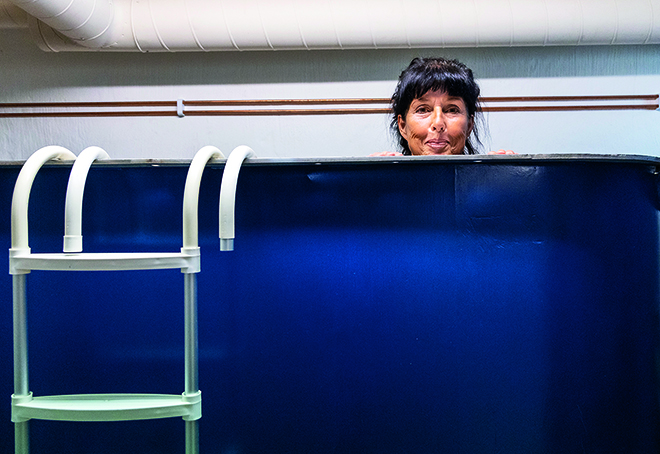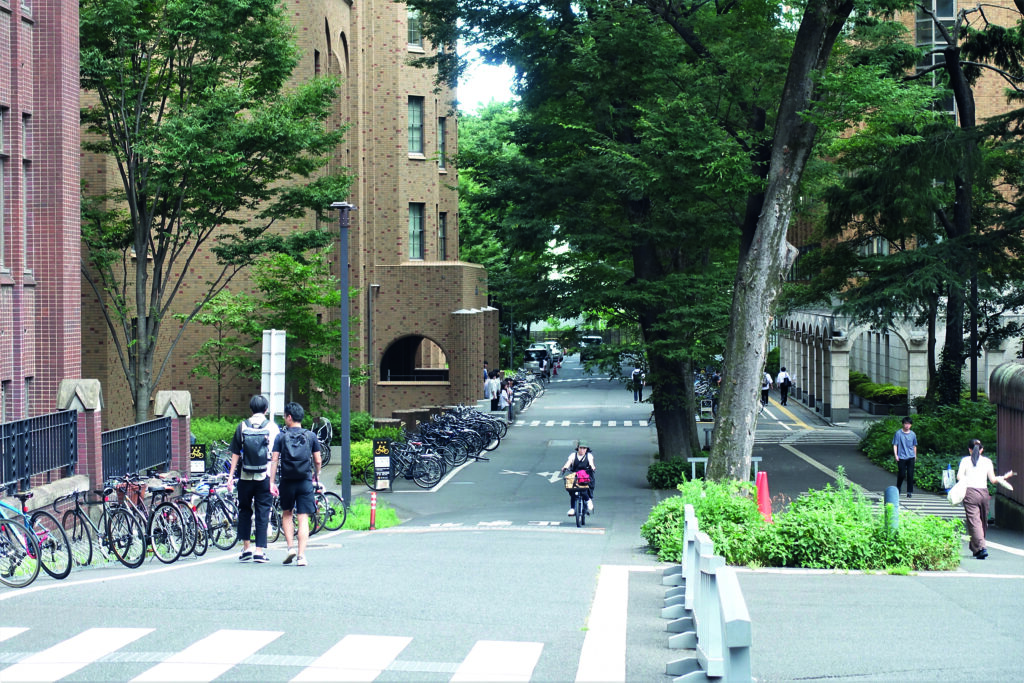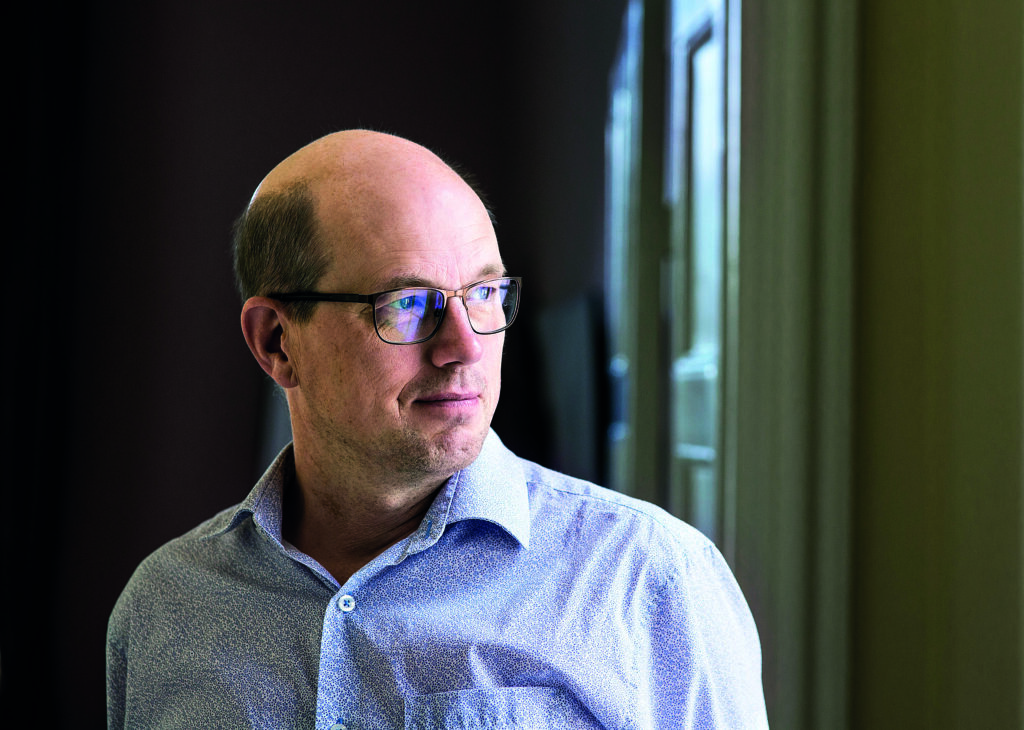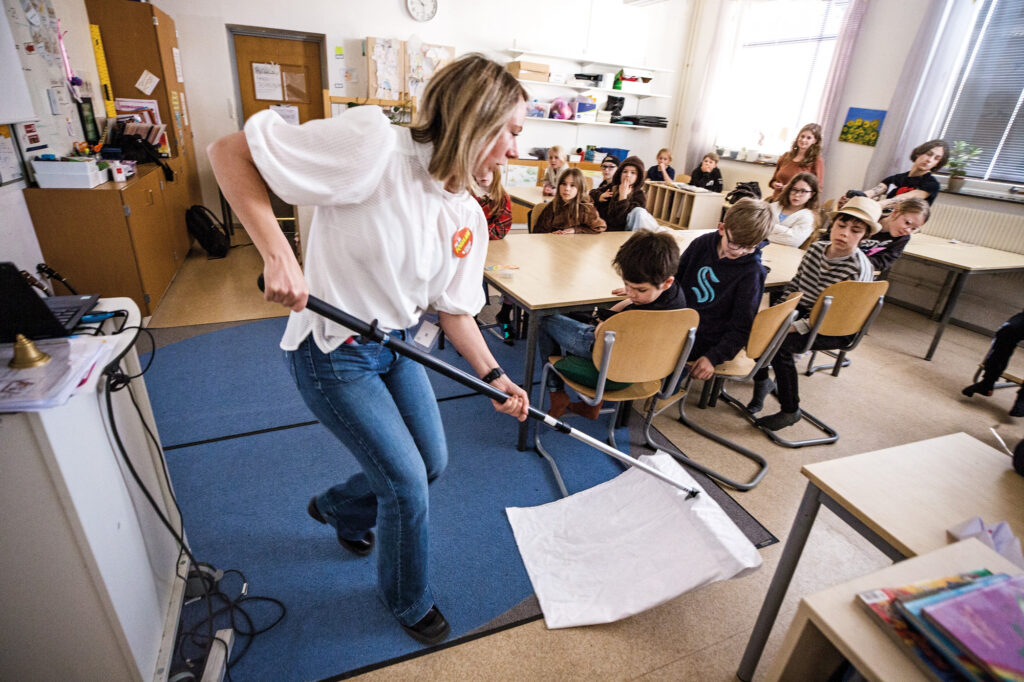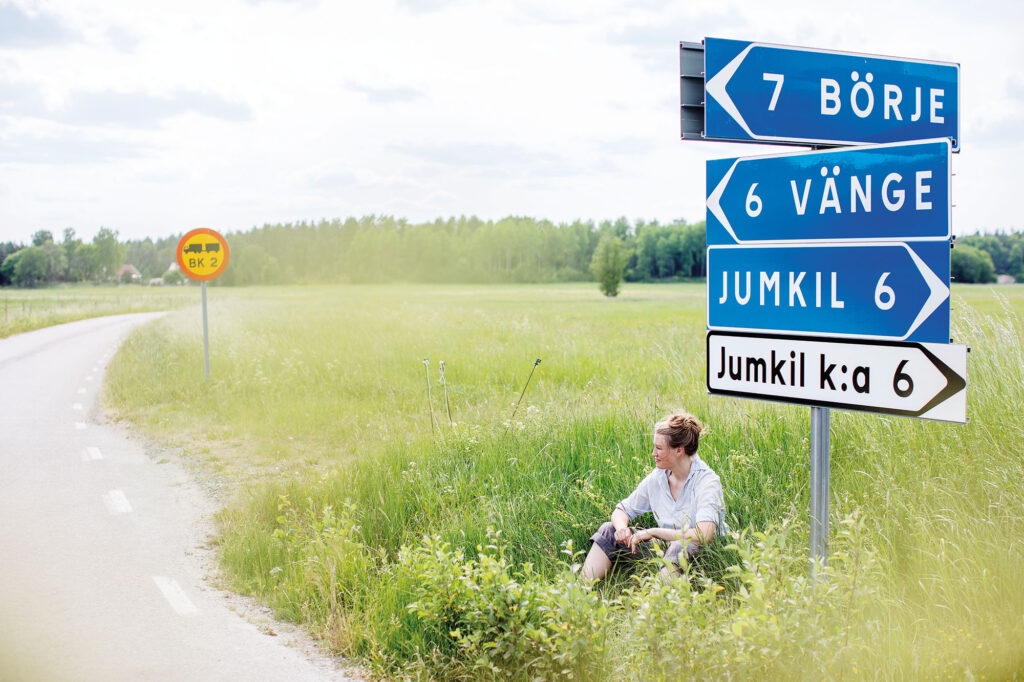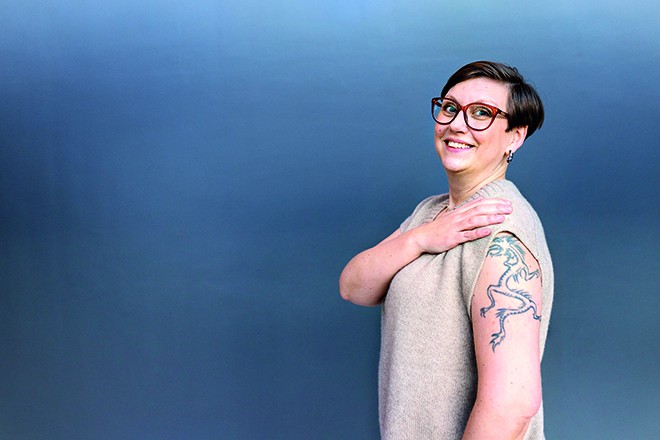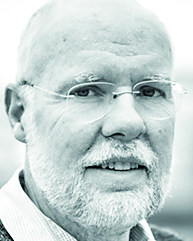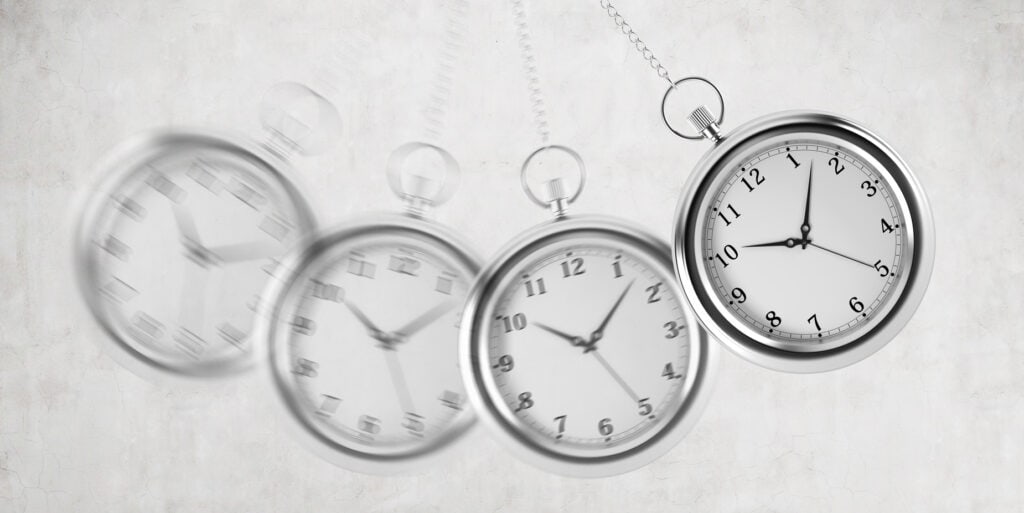The 14-degree water feels cold to my face. The light blue nose clip is fastened tight around my nostrils. I feel pressure from my lungs up towards my neck. Need air. But I also want to hold my breath for as long as I can. In the end, the pressure is too great and I lift my face out of the bowl where I am lying on the couch. Erika Schagatay, professor of zoophysiology, wipes my face with a towel.
“This is a way to simulate diving,” she says. “When the subject lies like this, we can measure things on their fingers and arms using medical equipment that doesn’t work underwater.,”
The sign on the door of the small room says ”Extreme Physiology Lab”. It is in one of the yellow buildings that make up Mid Sweden University’s campus in Östersund. Attached to my fingers are various meters that register my heart rate, blood pressure, blood flow and more. The electrodes on my back measure my ECG, the heart’s electrical signals, and the carbon dioxide level in my blood through my skin.
Internal diving equipment
Above the water bowl, a computer screen shows how my heart rate drops and the blood flow in my fingers decreases. My diving reflex has kicked in. My body is focused on supplying my brain and heart with oxygen and reduces the blood supply to those parts that can survive longer without oxygen.
“Just like seals and whales, humans have internal diving equipment in the form of organs that are adapted to use oxygen sparingly when we hold our breath. People who have a strong diving reflex can hold their breath for longer, and your diving reflex affects how good you can become at freediving, which is when you dive without breathing apparatus.”
Fascinated by freediving
The question of why people can freedive has fascinated Erika Schagatay throughout her working life as a researcher. As a 20-year-old, she was diving one day using breathing apparatus and was 36 metres below the surface of the Red Sea when she saw a harpoon fisher who was freediving. He shot a two-metre-long moray eel with the harpoon. The powerful eel tossed back and forth on the spear.
“The man had been below the surface for over three minutes. I thought he would black out and stayed nearby to be able to help him. But in the end, he swam up to the surface with the eel and looked pleased with himself. I was impressed.”
The experience raised questions. Humans are land animals, so how could that happen? Schagatay began reading up about it in medical literature. “But according to the books, humans can’t dive the way I had seen that man do.”
Stories about the water people
As a master’s student in zoophysiology, Erika Schagatay travelled to Indonesia. She had read old travel stories from the 19th century about water people that could hold their breath for an hour. Together with a friend, she set out in search of these mythical people. She asked around, heard rumours. The water people have fish scales and gills, people said. Then, one day, they met a bare-chested man who was standing erect and paddling. He was the chief of a water people village. The skin on his chest and shoulders really looked like it was covered with fish scales.
“I talked to a group of dermatological researchers in Lund later, and they said that could be a reaction to the skin being exposed to a lot of salt.”
Erika Schagatay wrote her thesis on the diving reflex of the Bajau water people, and found that it is extraordinarily strong. Since then, she has returned several times. In the beginning, she used to turn up with breathing apparatus, but she has trained her ability to hold her breath and can now dive without equipment. Today she can hold her breath for four minutes and fifteen seconds.
“We travel far out into the wilderness and use simple canoes, so it’s awkward to bring heavy diving equipment.”
Theories about humans as animals
Beneath the surface, she photographs and films the Bajau people’s diving and working methods. She has found that they only breathe for 40 per cent of their working time. The water people can hold their breath for up to a total of five hours a day.
Schagatay puts a big shell on the table. “They bring up things like this, conch snails. That’s dinner for a whole family.”
The research is also related to her interest in what kind of animal humans really are. It was at a conference in 1987 that she first came across the theory of the waterside ape; that humans may have been primates who lived along the shores and got their food from the water. The theory explains a lot, she says, such as why humans do not have fur and instead have subcutaneous fat and walk upright.
“It could also explain why we can train ourselves to dive deep,” she says. ”There’s more and more research that suggests that it’s reasonable to believe that humans were waterside apes. That’s exciting!”
Holding breath with the help of the spleen
It tickles and feels cold against the skin when Erika Schagatay applies transparent gel to my lower back in the diving lab. My spleen appears on the ultrasound machine, looking like a black and white bean. She measures it: just over nine centimetres long and four centimetres thick; a normal spleen. One of the research findings that she is most pleased with is that the spleen helps divers hold their breath. The larger the spleen, the longer the potential dive time.
“The spleen is a sac of red blood cells. When you start to experience a lack of oxygen, it squeezes itself so that red blood cells are released into your blood circulation. That increases the oxygen supply in your blood. We can see on the ultrasound how your spleen shrinks when you hold your breath.”
If you want to hold your breath for a long time, it also helps to drink beetroot juice. It was a doctoral candidate who came up this idea after some British researchers had shown that beetroot juice, and anything else that contains the substance nitrate, reduces oxygen consumption. ”That’s not true,” thought Schagatay, ”so let’s do a study on divers just to show that it’s wrong.”
“But we got exciting results,” she says. “Freedivers who had drunk beetroot juice with nitrate could hold their breath 11 per cent longer than when they had been given a placebo.”
We leave the diving lab and go down to the high-altitude chamber. This is a smaller room with large windows. Suddenly it is as if we are at an altitude of 5,300 metres, the same level as the southern base camp on Mount Everest. Inside, the oxygen content of the air is 11 per cent, compared with 21 per cent outside the chamber. We have pulse oximeters on our index fingers to measure the oxygen level in our blood. If the lack of oxygen becomes too great, you can faint.
At the top of Mount Everest
Schagatay has been on several expeditions in the Himalayas in northern Nepal with students and doctoral candidates. They take measurements from each other, from climbers going up to the top of Mount Everest and from the Sherpa people who have adapted to living in the mountains.
“Of the three Everest expeditions that I followed, everyone has returned, but not all climbers survive,” she says.
People withstand high altitudes to differing degrees. Researchers do not yet know why this is. Right now, Schagatay and her research team are designing a test to determine in advance how sensitive different people are to high altitudes. In recent years, her team has shown that the adaptations that occur in the body at high altitudes are similar to those that take place when diving. If you are good at holding your breath, have a strong diving reflex, a strong spleen reflex and also a large spleen, you can also function well at high altitudes.
She describes herself as an average person when it comes to altitude sensitivity. “I’m not among the most sensitive, nor am I super-resistant. When we measured my spleen in a pilot experiment a few years ago, it was near the top within the normal range.”
Schagatay recently spent two months at Blue Hole, a deep hole in the coral reef in the Red Sea in eastern Egypt that attracts the world’s foremost freedivers. She is building a lab so that the measuring equipment will be in the same place as the study subjects.
Dives in her spare time
Her research team takes readings from participants in diving competitions around the world. A few years ago, the Swedish freediver Annelie Pompe participated in a study.
“She stopped on the way up so that we could measure how much oxygen she had consumed during the dive. I put a pulse oximeter on her forehead and wrote up the values, then she came up towards the surface.”
Erika Schagatay is also usually the first subject when her team tests the research equipment to be used on deep divers. The deepest she has dived is 33 metres, during a deep diving course. But she is not particularly interested in testing her own limits.
“When I dive in my spare time, I mostly want to be underwater looking at fish,” she says.
